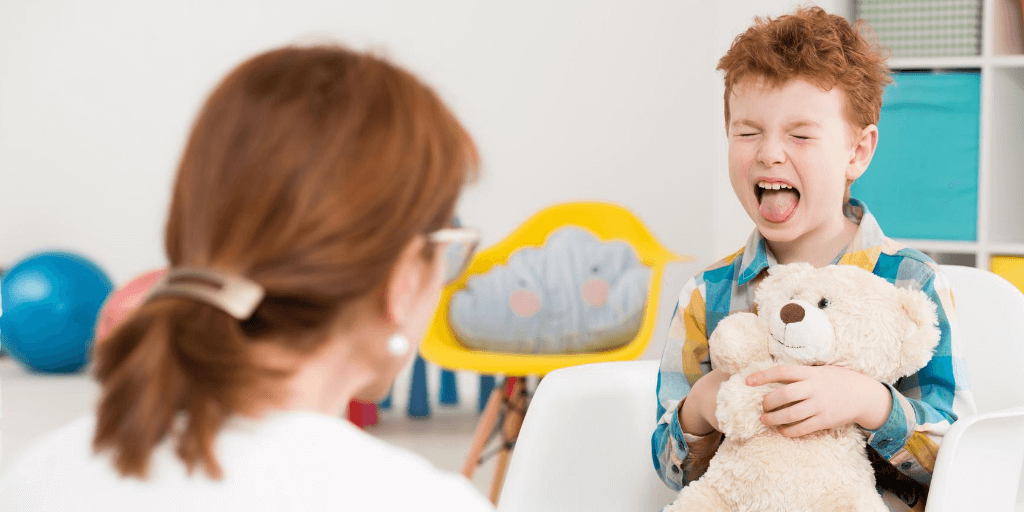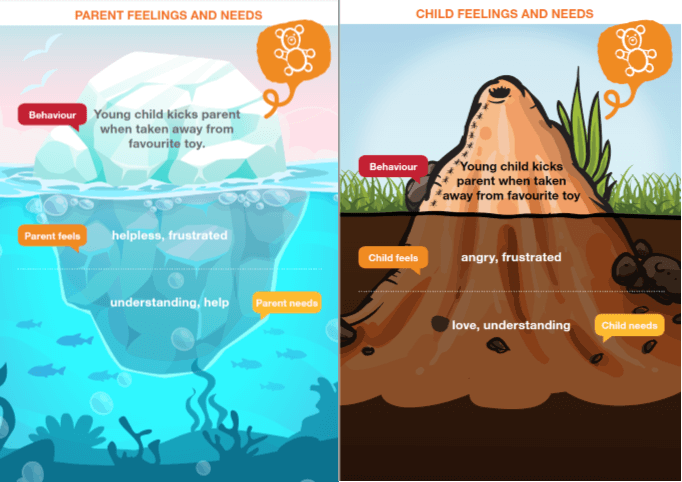
Reflections on behaviour
Parenting Consultant Hanif Reza Jaberipour shares reflections on how parents and carers can understand the behaviour they see in the children they care for. Using insights from the Australian Childhood Foundation's Bringing Up Great Kids parenting program, Hanif looks to increase insight and understanding for both parent and child as they learn more about what might be going on beneath the surface.
This blog was written by Hanif Reza Jaberipour, Senior Consultant in the Parenting and Early Years Program at the Australian Childhood Foundation.
As a parent or professional, in living or working with children affected by trauma, the behaviour is what we see. It is behaviour that challenges us, shows us clues about what’s going on inside the child, and invites us to react or respond to it. Behaviour is all we see from the child but it doesn’t mean that behaviour is the whole child.
This is very similar to an iceberg or an anthill. All we see is the tip but it is important to remind ourselves that the tip is not the whole iceberg or anthill. The big hidden part that somehow makes the tip visible is underneath. Using this analogy, in the case of the child, the big non-visible part that causes the behaviour includes the child’s feelings and needs. For this reason, to understand a child’s behaviours, it is important to be able to identify feelings and needs.
In our works with parents and professionals, we try hard to organise conversations and activities to practice this skill. Learning not to react, but to dive down into the water to look at feelings and needs (or digging down the dirt in the case of anthill).

Recognising and acknowledging the importance of feelings and needs is an important first step. Then it is time to identify and sometimes to guess the feelings and needs that might be underlying the behaviours observed. But here is where we come across a common barrier – many parents, carers and professionals have trouble distinguishing feelings from needs, and needs from want. We mix them, use terms interchangeably in our sentences and find it hard to label them properly. In our daily conversations, we might say “You need to pack up”, or “We need to leave the shopping centre”. These phrases highlight the parent’s want rather than their need. This is a nuanced distinction. Let’s look at an example from the Bringing Up Great Kids (BUGK) program.
In the example described in the diagrams, a young child kicks their parent when taken away from their favourite toy. We can assume that
- The child wants “more time to play” and is probably feeling “angry and frustrated”. However, in this situation, the child’s need is probably “love and understanding”.
- The parent’s want is “to take the child off the toy”, and/or “to leave the room asap” and may feel “frustrated”. However, the parent’s need is perhaps “understanding and help”.
At first, these situations can produce a standoff as ‘children’s wants’ and ‘parents wants’ often look opposite to each other.
As you can see in the image, we place the iceberg and the anthill side-by-side, looking to make a balance between the child’s and parent’s needs. We believe that this approach can bring sustainability to the parent-child nurturing relationship.
We have observed that when parents and carers focus on wants, usually, there is no way to find a solution that fits both.
We have observed that when parents and carers focus on wants, usually, there is no way to find a solution that fits both. But, by switching focus and being mindful of needs, the parent might be able to suggest a solution that meets the needs of both parties (i.e. comfort, a hug that then promotes cooperation). This approach is complicated by the significant range in ideas we all have about what the wants, feelings and needs are in different situations.
Looking beyond the behaviour and noticing feelings and needs, is a skill. Like every other skill, it needs the practice to develop. We suggest parents and professionals start the practice from identifying their feeling and needs. Then, at peaceful times when they feel like have the capacity, try to guess others’ feelings and needs. And finally, never forget that building up a skill comes only with repetition, so just repeat and repeat the exercise again and again.
This repetition of practice builds a capacity that can more easily be drawn on in times that we need it. We will find ourselves more able to see underlying feelings and needs at times of being challenged by behaviour. By being consistent with the exercise we also develop a habit of shifting our focus, concentrating less on the behavioural tip and more on diving down the water or digging down into the dirt to explore the feelings and needs. In turn, once we are more aware of ours and our children’s feelings and needs (or at least can have a good guess about them!), we have the opportunity to suggest other solutions that might work better in that situation and meeting both needs and slowing the reactive cycle of responding to behaviours with frustration and overwhelm.
The pictures used in this blog article are taken from our Bringing Up Great Kids – Behaviour Busters Cards designed for professionals to use in their work with parents and carers. You can purchase these on the Foundations website here.
